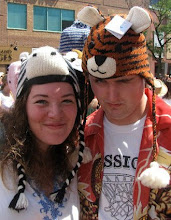Easter is the central feast in the Christian liturgical year. According to the Canonical gospels, Jesus rose from the dead on the third day after his crucifixion. His resurrection is celebrated on Easter Day or Easter Sunday[ (also Resurrection Day or Resurrection Sunday). The chronology of his death and resurrection is variously interpreted to have occurred between AD 26 and 36.
Easter is preceded by Lent, a forty-day period of fasting, prayer, and penance. The last week of Lent is called Holy Week, and it contains Maundy Thursday, commemorating Maundy and the Last Supper, as well as Good Friday, commemorating the crucifixion and death of Jesus. Easter is followed by a fifty-day period called Eastertide or the Easter Season, ending with Pentecost Sunday.
Easter is linked to the Jewish Passover by much of its symbolism, as well as by its position in the calendar. In many languages, the words for "Easter" and "Passover" are etymologically related or homonymous

The Easter Bunny or Easter Rabbit is a character depicted as
a rabbit bringing Easter eggs, who sometimes is depicted with clothes
. In legend, the creature brings baskets filled with colored eggs, candy
and sometimes also toys to the homes of children, and as such shows
similarities to Father Christmas, as they both bring gifts to children on the
night before their respective holiday. It was first mentioned in Georg
Franck von Frankenau's De ovis paschalibus (About Easter Eggs)
referring to an Alsace tradition of an Easter Hare bringing Easter Eggs.
The original Easter bunny was probably associated with the Pagan equinox festival that predated Easter. The Saxons devoted the month of April to celebrating their goddess of spring and fertility, who was,
not coincidentally, named Eastre. Eastre's sacred animal was the hare - not surprising since the
rabbit is one of the most common symbols of fertility
and rebirth.
Caption: Ostara is the celebration of the vernal equinox,
and the goddess Eostre. Above,Eostre flies through
the air with symbols of spring, rebirth and fertility.
Ostara, or the vernal equinox, is upon us and night and day are in perfect balance.
Ostara is just one of the names given to the celebration of the spring equinox. The word Ostra derives from Eostre, the Anglo-Saxon goddess of spring and fertility, whose festival at the spring equinox celebrates rebirth.Ostara is associated with the coming of spring and the dawn, and Eostre’s festival is celebrated at the spring equinox because she brings renewal and rebirth from the death of winter.Wiccans, Heathens, and modern Pagans celebrate the vernal equinox as Ostara, Lady Day, Shubun-sai, or the spring equinox as a time of renewal and rebirth.
Symbols Of Ostara: Eggs, like rabbits and hares, are fertility symbols of antiquity. Since birtds lay eggs and rabbits and hares give birth to large litters in the early spring, these became symbols of the rising fertility of the earth at the Vernal Equinox
Scholars believe that the pairing of the hare and the egg together in Easter may also have Pagan roots. During springtime, when days and nights were equal length, the hare was identified with the moon goddess and the egg with the sun god. Pairing the two together offered a kind of ying and yang to spring equinox celebrations. the coloured eggs carried by today's Easter bunnies have another , even more ancient origin. Eggs have long been associated with fertility and springtime festivals
- the precise roots of the festival are unknown. Ancient Romans and Greeks utilized eggs in festivals celebrating resurrected gods. The egg also featured prominently in the Jewish rituals of Passover
- and still today the roasted of egg has prominence on the Seder table as an essential symbol of springtime and rebirth.








No comments:
Post a Comment